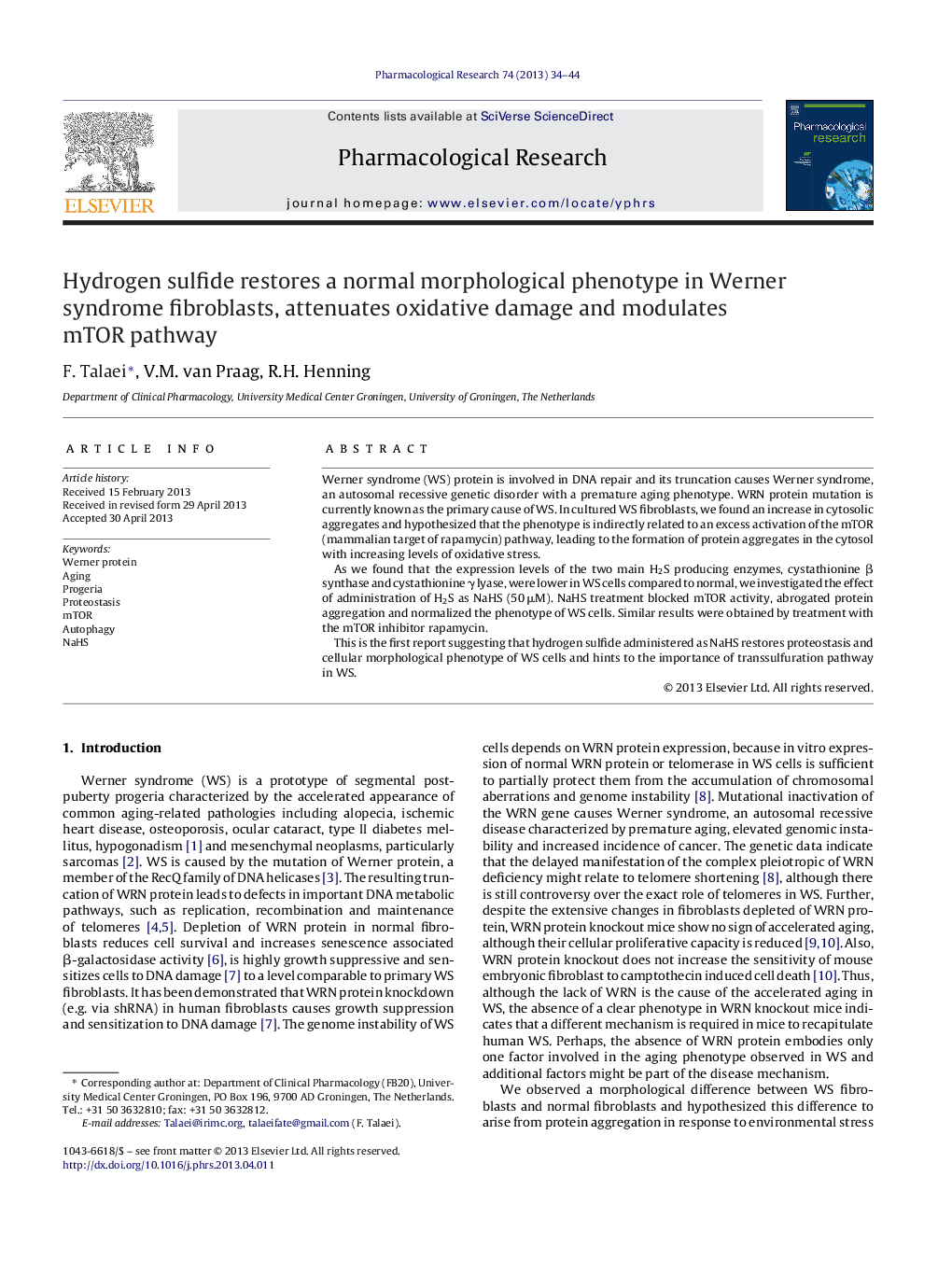| Article ID | Journal | Published Year | Pages | File Type |
|---|---|---|---|---|
| 2562749 | Pharmacological Research | 2013 | 11 Pages |
Werner syndrome (WS) protein is involved in DNA repair and its truncation causes Werner syndrome, an autosomal recessive genetic disorder with a premature aging phenotype. WRN protein mutation is currently known as the primary cause of WS. In cultured WS fibroblasts, we found an increase in cytosolic aggregates and hypothesized that the phenotype is indirectly related to an excess activation of the mTOR (mammalian target of rapamycin) pathway, leading to the formation of protein aggregates in the cytosol with increasing levels of oxidative stress.As we found that the expression levels of the two main H2S producing enzymes, cystathionine β synthase and cystathionine γ lyase, were lower in WS cells compared to normal, we investigated the effect of administration of H2S as NaHS (50 μM). NaHS treatment blocked mTOR activity, abrogated protein aggregation and normalized the phenotype of WS cells. Similar results were obtained by treatment with the mTOR inhibitor rapamycin.This is the first report suggesting that hydrogen sulfide administered as NaHS restores proteostasis and cellular morphological phenotype of WS cells and hints to the importance of transsulfuration pathway in WS.
Graphical abstractFigure optionsDownload full-size imageDownload high-quality image (183 K)Download as PowerPoint slide
